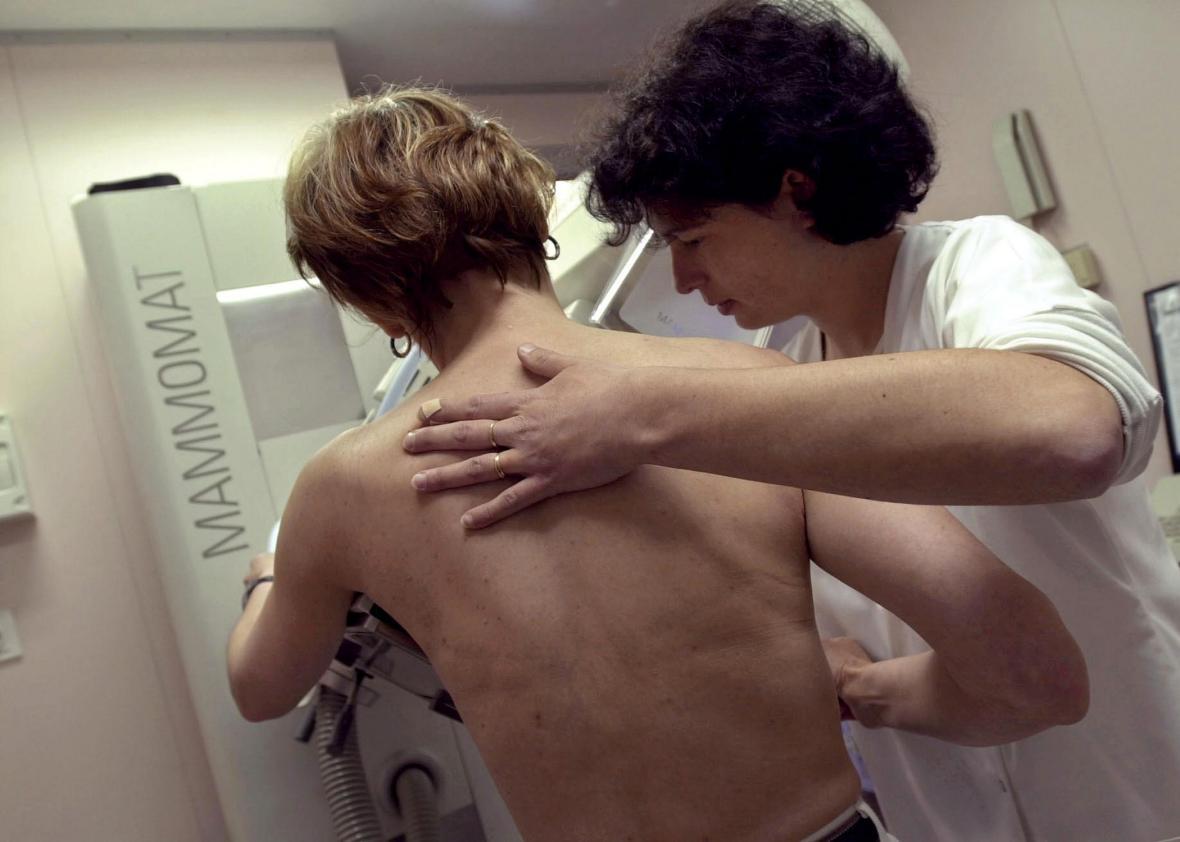In a study published Monday in the New England Journal of Medicine, a group of cancer researchers got a rare kind of result: one that was way, way better than they had expected. “We knew these patients were going to do well, but we didn’t dream they would do this well,” Joseph Sparano, the study’s lead author, told the Wall Street Journal.
Sparano was talking about a five-year study designed to figure out if certain women could forgo chemotherapy without affecting their chances of recovery from breast cancer. The answer: a resounding yes. For women whose tumors display a certain genetic makeup, surgery and a regimen of drugs to block the hormones that fuel breast cancer are sufficient to prevent a relapse in 99 percent of cases, and leave 94 percent of women cancer-free after five years. Chemotherapy, experts say, would not improve those numbers. In other words, going forward, a subset of women will not undergo the most grueling part of breast cancer treatment.
Doctors have known for years that testing a tumor’s genes can yield precise predictions of how aggressively it will grow and spread, and how well it will respond to hormone therapy. The test that measures these factors to determine whether women are low-risk, high-risk, or somewhere in between—called Oncotype DX—has been on the market since 2004. But until now, there wasn’t enough data available to interpret its results into hard-and-fast treatment recommendations. Researchers who have studied Oncotype DX in the past have tracked women’s outcomes, confirming that the link between genetics and recurrence is a reliable one. But this new study is the first to assign women different kinds of treatment based on their risk and then track how well those regimens worked.
The study enrolled 10,253 women, all of whom had early stage breast cancer that hadn’t spread to their lymph nodes. (This is the most common form of the disease; more than 100,000 women in the U.S. are diagnosed with it each year.) The test results are measured on a 100-point scale; researchers classified the 16 percent of the women with scores below 11 as low risk, the 67 percent whose scores fell between 11 and 25 as intermediate risk, and the 17 percent with scores over 25 as high risk. None of the low-risk patients were given chemo—and their overwhelmingly positive results were the ones published today.
What about the other 84 percent of women in the study, though? The researchers are continuing to track them in the hopes of someday publishing their findings. All of the high-risk women received chemo, but the group with intermediate risk was randomly divided: some received chemo, and some only hormone therapy. The results from this middle group in particular will determine if chemo is superfluous for only a relatively small number of women—the ones included in today’s findings—or a much larger slice of the population.
“What we are uncertain about is where to draw the cutpoint,” Sparano said, suggesting that “11” may not be the right place to set the line. “How low can we go to that cutpoint? That’s an unanswered question that will be addressed by the ongoing trial.”
In the meantime, we still don’t know how many of breast cancer patients undergoing chemotherapy are actually benefiting from the treatment—and how many could be spared that ordeal without changing their chances of recovery.
